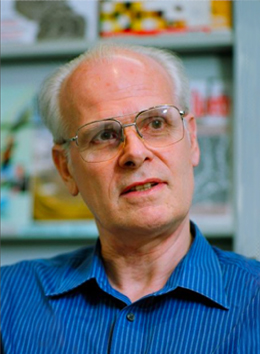Michel Van Hove's research has focused on the determination of the atomic-scale structure and bonding at solid surfaces and in nanostructures, in order to establish the atomistic basis of surface science, nanoscience and their many technological applications (catalysis, electronic devices, corrosion, tribology, etc.). He developed and implemented powerful novel methods of electron scattering theory and computation, most recently for nanostructures. In particular, electron diffraction and holography have been developed for structural determination of surfaces and interfaces. He also played a central role in producing a database of solved surface structures. His work furthermore addressed the use of synchrotron radiation to materials science, particularly using photoelectron diffraction. He has also conducted research on the theory of scanning tunneling microscopy (STM) and atomic force microscopy (AFM), in order to enable the interpretation of atomic-resolution images. His studies have included total-energy calculations of adsorption at surfaces, ab initio modeling of quantum well states of relevance to magnetic ultrathin films, and the simulation and investigation of segregation phenomena in bimetallic alloy nanoparticles.
Prof. Van Hove was elected PSHK Honorary Member in 2021, “for significant contributions to the PSHK as its Council Chairman and to physics in Hong Kong as Head of the Department of Physics and Materials Science of CityU, Head and Head of the Department of Physics of HKBU."
